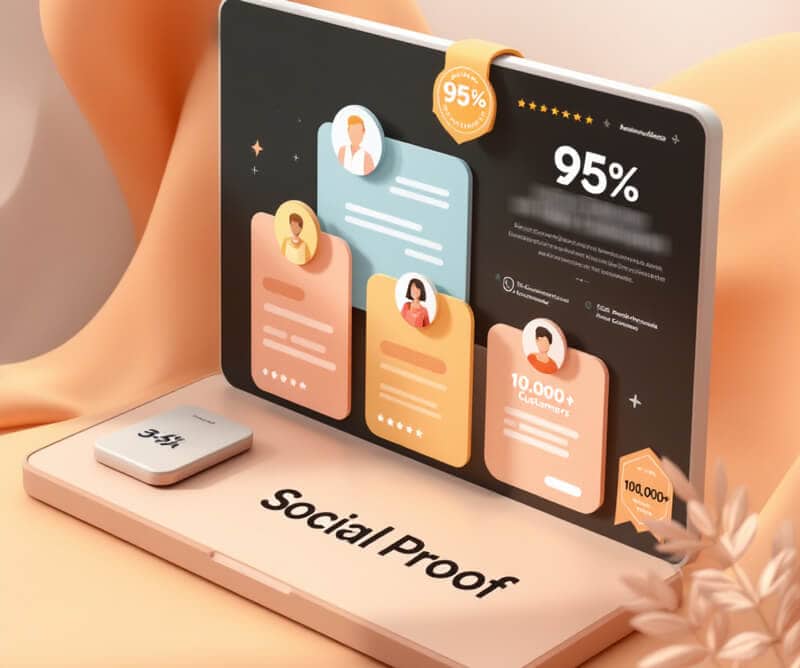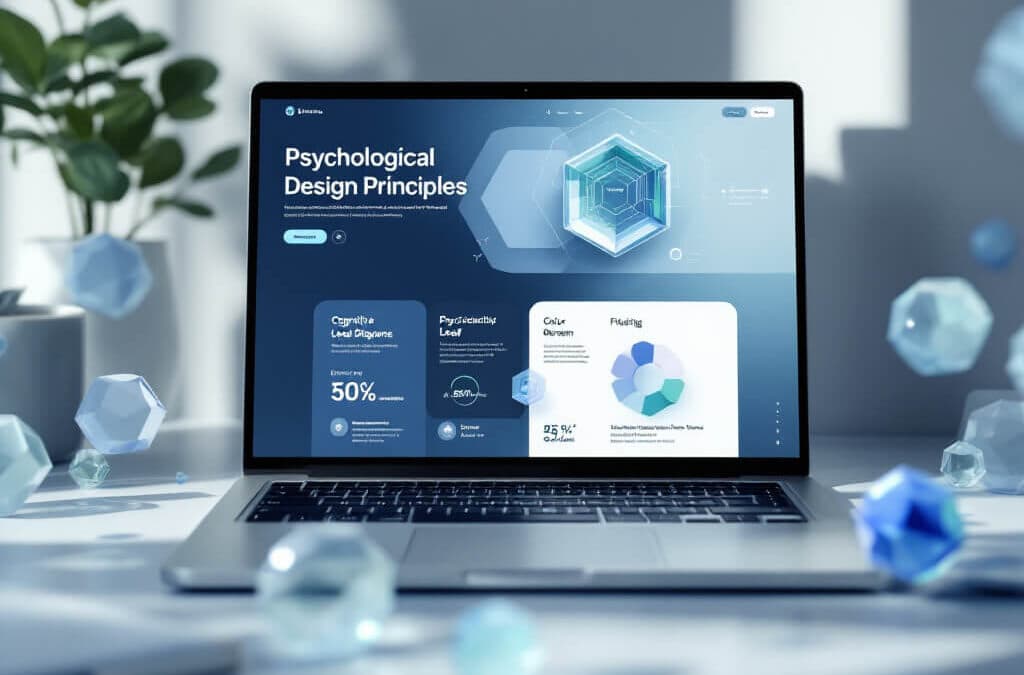A Game-Changer for Business Owners
Imagine this: a potential customer lands on your website, intrigued by your business, but within seconds, they leave—overwhelmed, confused, or simply uninspired. In today’s digital marketplace, this scenario is all too common and could be costing you valuable leads. But here’s the good news: understanding how your customers think and behave online can help turn things around. The solution? Psychology-driven web design.
Your website isn’t just a virtual storefront—it’s the backbone of your brand and often the deciding factor for whether potential customers stick around or bounce away. That’s why effective web design is about far more than just aesthetics. To drive results and truly stand out, you need to tap into the power of psychology.
By understanding how people think, process information, and make decisions online, you can design websites and Call-to-Action (CTA) buttons that don’t just look great but also persuade visitors to take action. Psychological principles can give you a competitive edge, whether you want to boost conversions, drive leads, or build trust with your audience.
This article will explore how simplifying decision-making with cognitive load theory and crafting CTAs that speak to human psychology can transform your website. To round out your approach, we’ll also touch on other helpful strategies, like colour psychology and social proof.
1. Simplify Decision-Making with Cognitive Load Theory
Have you ever visited a website and felt utterly overwhelmed—too much text, too many buttons, or an overload of options? That’s cognitive overload in action, one of the main reasons users abandon websites without taking meaningful action.
Cognitive Load Theory explains that when people are presented with too much information at once, their brains struggle to process it, leading to confusion and, more often than not, inaction. This is a crucial insight for business owners: you must make your website as simple and intuitive as possible to keep visitors engaged.
Here’s how to reduce cognitive load on your website:
- Declutter your design: Eliminate unnecessary elements that distract from your core message or CTA. A clean, simple design keeps users focused on what matters most. For instance, instead of cramming multiple CTAs and paragraphs of text onto your homepage, focus on one clear message and a single prominent CTA, like Patagonia’s minimalist product pages.
- Use clear and concise messaging: Avoid jargon and overly complex language. For example, replace “Explore Our Comprehensive Solution Portfolio” with something simpler like “See Our Products.” Think about how Netflix simply says, ‘Watch Anywhere. Cancel Anytime.’ It’s direct and easy to understand. [Read earlier article: Writing techniques: Improving readability & engagement]
- Limit choices: While offering options is good, too many can overwhelm users. If you have multiple pricing plans or products, highlight one as the “most popular“ to guide decisions.
- Guide users visually: Organise information using headings, bullet points, and whitespace. This makes your content easier to scan and digest.
Take Apple’s website as an example. When you visit its product pages, you’ll notice it doesn’t bombard you with endless information. Instead, it focuses on clean visuals and concise text, effortlessly guiding you toward its CTAs. Adopting a similar approach ensures your visitors feel at ease and are more likely to take action.
Pro Tip: Apply these principles to your CTAs as well. Ensure your buttons are simple, direct, and action-oriented. Phrases like “Learn More” or “Get Started” are clear and encourage immediate action.
Once your website is clear and intuitive, the next step is ensuring your CTAs are as compelling as possible. After all, they’re the final push that transforms visitors into customers.
2. Craft CTAs That Speak to Human Psychology
Your Call-to-Action buttons are the linchpin of your website. They’re the final nudge that turns a visitor into a customer, a subscriber, or a lead. But here’s the secret: the most effective CTAs don’t just tell people what to do—they tap into human psychology to make that action feel natural and compelling.
Here’s how you can create CTAs that resonate:
- Create a sense of urgency: Use phrases like “Limited Time Offer“ or “Sign Up Before Midnight“ to encourage users to act quickly rather than putting it off for later.
- Highlight the benefit: Instead of using generic phrases like “Submit“ or “Click Here,“ frame your CTA around what the user will gain. For example, “Get My Free Ebook“ or “Start Saving Today“ emphasises the value they’ll receive.
- Use personalisation: Address the user directly with words like “Your“ or “You.“ For example, “Claim Your Discount“ feels more engaging than “Claim Discount.”
- Experiment with design and placement: Studies show that your CTA buttons’ colour, size, and position can significantly impact conversions. Test different designs to see what works best with your audience.
Psychological triggers such as FOMO (Fear of Missing Out) or Reciprocity can be used in CTAs.
For example:
- You can also appeal to psychological triggers like FOMO by using phrases like ‘Offer Ends Tonight‘ or ‘Only 3 Left in Stock.‘ This creates urgency and taps into users’ natural fear of missing out.
- Reciprocity can also be powerful. Offering something free, like a guide or trial, encourages users to take action. For example, ‘Download Your Free Guide‘ feels like a fair exchange.
A great example of a powerful CTA comes from Dropbox. Their homepage features a bright blue button that reads, “Sign up for free.” It’s simple, benefit-driven, and eliminates hesitation by emphasising the zero-risk factor.
Pro Tip: Always A/B test your CTAs. Minor tweaks, like changing the colour or wording, can significantly improve click-through and conversion rates.
Now that we’ve covered the importance of crafting CTAs that resonate, let’s take it a step further. What if you could make your CTAs and website design more persuasive using only colour? That’s the power of colour psychology.
3. The Power of Color Psychology: Speak to Emotions Through Design
While cognitive load and CTAs are critical, your website’s visual appeal significantly affects how users perceive and interact with your brand. This is where colour psychology comes in—a fascinating field that explores how different colours evoke specific emotions and behaviours.
- For instance:
- Red can create urgency, making it ideal for sale banners or “Act Now“ CTAs.
- Blue fosters trust and dependability, which is why financial and tech companies often use it.
- Green symbolises growth and calmness, making it perfect for eco-friendly or wellness brands.
- Yellow grabs attention and conveys optimism, helping CTAs or special offers stand out.
Amazon’s famous yellow “Add to Cart“ button is an excellent example of how colour can influence behaviour. It’s bright, positive, and hard to miss—precisely what you want for a high-conversion CTA.
Keep in mind that colour associations can vary across cultures. For instance, while white is associated with purity in Western cultures, it’s often linked to mourning in some Eastern cultures. If your business serves a global audience, understanding these nuances can help you choose colours that resonate universally.
Pro Tip: Use a consistent colour scheme that aligns with your brand and ensures your CTAs contrast with the rest of your design to draw attention.
Colours can evoke emotions and guide user behaviour, but what happens when visitors hesitate to take the next step? This is where social proof becomes your secret weapon, helping you build trust and nudge users toward conversion.

4. Leverage Social Proof to Build Credibility and Trust
Humans are social creatures, and we’re naturally more likely to trust something if others have validated it first. This psychological principle, known as social proof, can be a game-changer for building trust and encouraging conversions on your website.
Here’s how to use social proof effectively:
- Display testimonials: Showcase glowing reviews from satisfied customers. If possible, include photos or names for authenticity.
- Highlight user numbers: Use stats like “Join 10,000+ happy customers“ to show your product’s popularity.
- Showcase trust badges: Display certifications, awards, or security symbols to reassure users.
- Feature user-generated content: Share photos, videos, or stories from real customers to make your brand relatable.
For example, Airbnb prominently features guest reviews on their listings, helping potential users feel confident about booking. Adding similar elements to your website can create a sense of trust that motivates visitors to take action.
To maximise the impact of social proof, ensure it’s placed strategically—near key CTAs, on the homepage, or even as part of your checkout process. Seeing positive reviews or trust badges at decision-making points can reassure users and reduce hesitation.
Pro Tip: Place social proof near your CTAs to reinforce credibility when users decide whether to click.
By leveraging social proof, you can establish trust and credibility with your audience, giving them the confidence to take action. When paired with the strategies we’ve covered—like simplifying decision-making, crafting effective CTAs, and using colour psychology—you’ll have a comprehensive toolkit to create a website that looks great and delivers results.
Think about it: do visitors to your website see the glowing testimonials, trust badges, or user stats that build confidence in your brand? If not, now is the time to add these elements and show potential customers why they should trust you.
Final Thoughts: Psychology as Your Secret Weapon
Incorporating psychological principles into your website and CTA design is no longer optional—it’s essential for thriving in today’s competitive online landscape. By simplifying decision-making, crafting CTAs that resonate, and leveraging strategies like colour psychology and social proof, you can create a website that feels intuitive, engaging, and persuasive.
Start small: Analyse your current website to identify areas for improvement. Whether you simplify your layout, optimise your CTAs, or use social proof to build trust, even minor changes can lead to significant results. Your website isn’t just a digital storefront—it’s your most powerful growth tool. So why wait? Make your first change today!
Contact us if you need assistance in doing this. We can help you get the most from your website and further develop your online strategy.
Sources:
- Educational Psychology on Cognitive Load Theory [ https://www.instructionaldesign.org/theories/cognitive-load/]
- Nielsen Norman Group on Cognitive Load in UX [https://www.nngroup.com/articles/minimize-cognitive-load/]
- HubSpot’s Guide to Writing Strong CTAs [https://blog.hubspot.com/marketing/how-to-create-effective-cta]
- Psychology of CTAs on UX Collective (Medium) [https://uxdesign.cc/the-psychology-behind-call-to-action-buttons-8c9b3e6f2c0b]
- The Psychology of Color in Marketing and Branding (Verywell Mind) [https://www.verywellmind.com/color-psychology-2795824]
- Canva’s Guide to Color Psychology in Design [https://www.canva.com/colors/color-psychology/]
- CXL on Social Proof in Marketing [https://cxl.com/social-proof/]
- The Science of Social Proof (Psychology Today) [https://www.psychologytoday.com/us/blog/science-choice/202007/the-science-social-proof]
- Interaction Design Foundation on Psychology in UX Design [https://www.interaction-design.org/literature/topics/psychology]
- Smashing Magazine on Using Psychology in Web Design [https://www.smashingmagazine.com/2012/06/psychology-and-usability-in-web-design/]
- Optimizely’s Guide to A/B Testing [https://www.optimizely.com/optimization-glossary/ab-testing/]




















